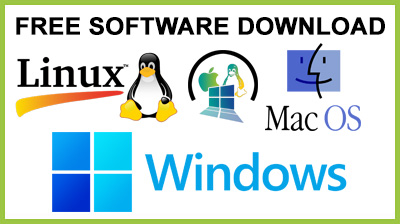
Virtual Physics Pro
Make experiments and observe physical phenomena in our virtual labs.Virtual Physics Pro is the collection of programs simulating physical phenomena for schools and colleges. The experiments can be set by the teacher and then downloaded by students in the local area network. See what you can never see in nature! The most exiting feature of Virtual Physics is that you can perform and observe many experiments you can never see either in nature or in the school laboratory, eg. stars moving on their orbits or the motion of the molecules of gas. The program consists of 13 modules covering: Diffraction, Dynamics, Electrostatics, Gravity, Kepler Laws, Kinematics, Kirchhoff Laws, Optics, Oscillations, Projectiles, Thermodynamics, Vectors and Waves. With the Diffraction module you can observe diffraction. It occurs when light bends around an obstacle or, as in our experiment, passes through a slit. If the slit is comparable or narrower than the length of the light wave, the light bends. In fact the slit acts then as a separate wave source. With the Dynamics module you can investigate the motion of a block sliding down an inclined plane as a result of Earth's gravity force. You will be able to see vectors of the forces exerted on the block. In the Electrostatics module you can see how the electric field, generated by a set of static charges, looks like. Both the strength and the potential of the field can be represented by color intensities in the simulation window. With the Gravity module you can investigate gravitational interactions of celestial bodies. You can define two, three or more objects like stars, planets, comets, spacecrafts etc. The simulation window can be enlarged to full screen mode. Kepler module lets you investigate motions of planets and other celestial bodies in our Solar System. While this is a relatively simple, two-dimensional model, it is very helpful in understanding Kepler's laws. With the Kinematics module you will see how the same motion can be described in a number of equivalent ways, using various terms. This module shows also how using different coordinate systems helps in describing the motion in as simple a way as possible. The Kirchhoff module can help you in developing intuitions for basic notions that describe the electric current as well as in understanding properties of simple electric circuits. With the Optics module you can investigate two very common physical phenomena we are all familiar with - reflection and refraction. They both occur when e.g. a light wave crosses a boundary between two different media, like water and air. With the Oscillations module you can investigate oscillations of a mass on a spring or a mathematical pendulum. It is interesting that the mathematical description of the two types of oscillators is exactly the same. The phenomenon of a harmonic oscillator underlies the design of lots of devices, from old-fashioned clocks to sophisticated audio equipment. Projectiles module is an excellent opportunity to study accelerated motion of bodies. In this particular case the acceleration which determines the trajectory of a projectile is due to the Earth's gravity. With this simple module you can follow trajectories of projectiles and see how they change with varying parameters of the launch. With this Thermodynamics module you can observe motions and interactions of gas particles. It can help you in understanding the concept of temperature. You can choose one or two gases. When there are two gases in the container, you can set the width of the gap in the wall which separates them. Vectors module can help you in understanding the operations of adding and subtracting vectors. While many phenomena around us can be characterized by numbers (like air temperature) others have not only value but also direction and orientation - e.g. velocity of a car. With the Waves module you can investigate waves and their interference in a one-dimensional medium, like a string. You can also set the sound generation option.
Conclusion
To conclude Virtual Physics Pro works on Windows operating system(s) and can be easily downloaded using the below download link according to Commercial license.Virtual Physics Pro was filed under the Collection Organizers category and was reviewed in softlookup.com and receive 4.9/5 Score.
Virtual Physics Pro has been tested by our team against viruses, spyware, adware, trojan, backdoors and was found to be 100% clean. We will recheck Virtual Physics Pro when updated to assure that it remains clean.
Virtual Physics Pro user Review
Please review Virtual Physics Pro application and submit your comments below. We will collect all comments in an effort to determine whether the Virtual Physics Pro software is reliable, perform as expected and deliver the promised features and functionalities.Popularity 9.8/10 - Downloads - 219 - Score - 4.9/5
Softlookup.com 2023 - Privacy Policy
| Category: | Collection Organizers |
| Publisher: | NAHLIK SOFT |
| Last Updated: | 17/11/2023 |
| Requirements: | Not specified |
| License: | Commercial |
| Operating system: | Windows |
| Hits: | 491 |
| File size: | Not specified |
| Price: | 29.9 USD |
| Name: * |
E-Mail: * |
| Comment: * |
|